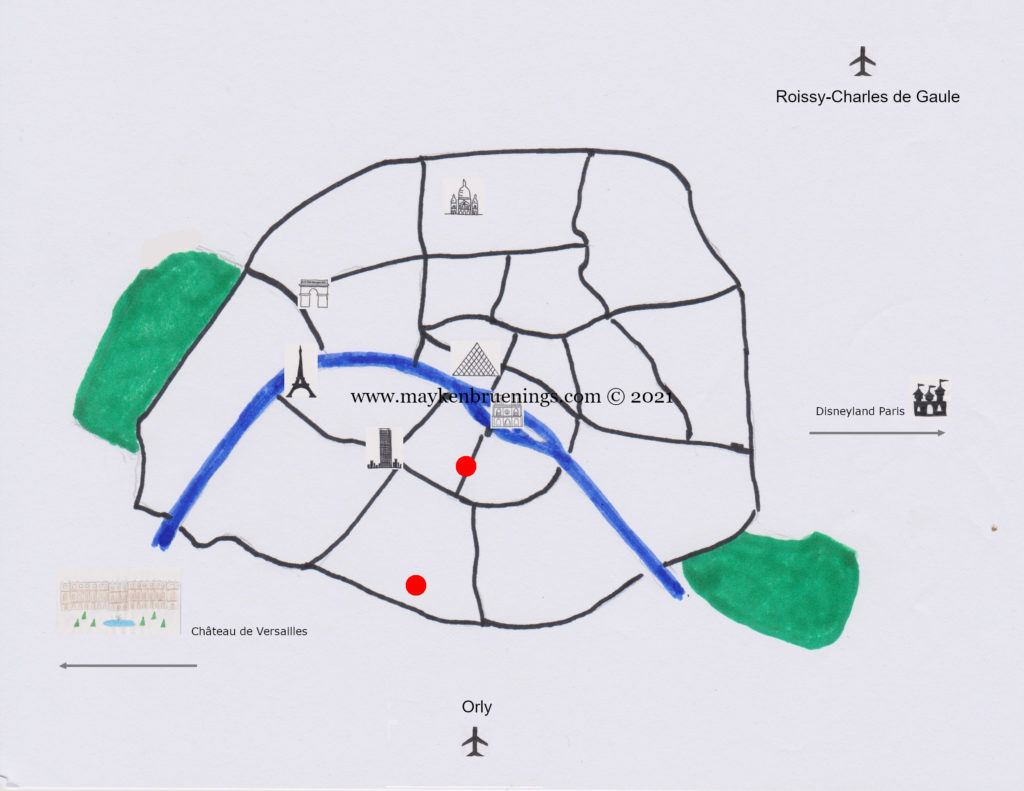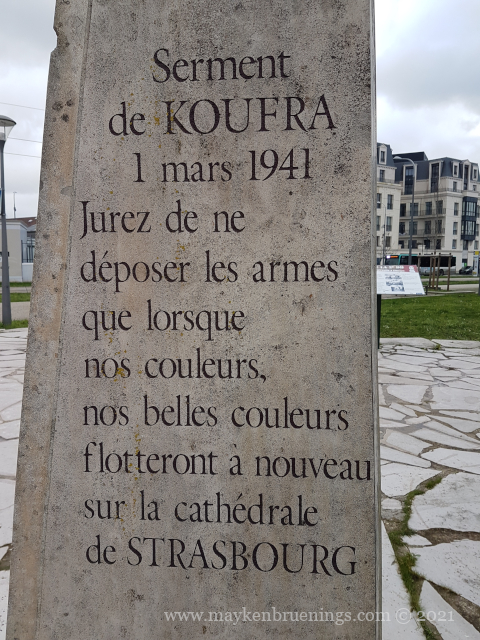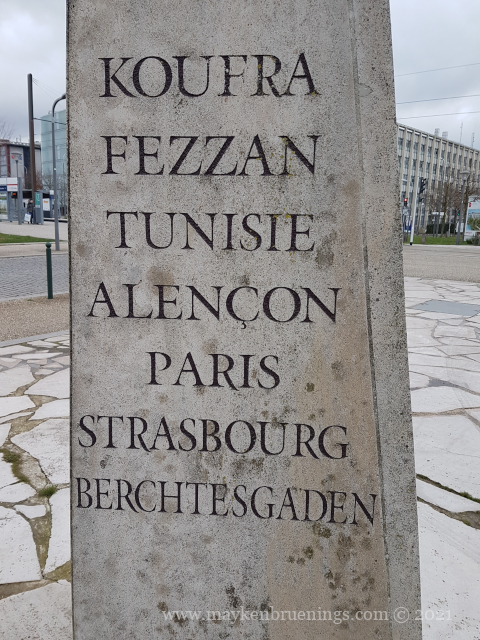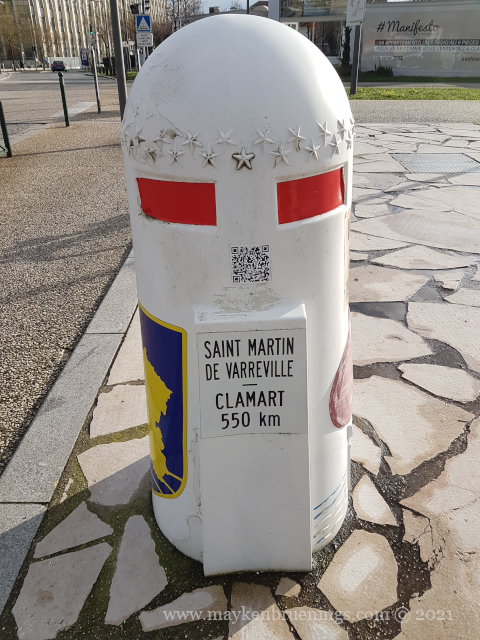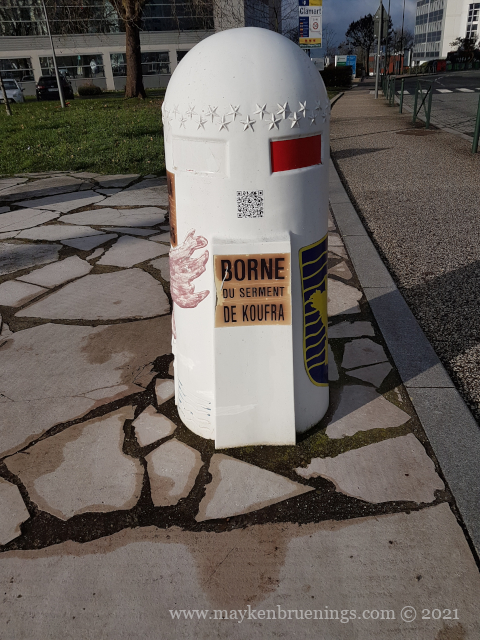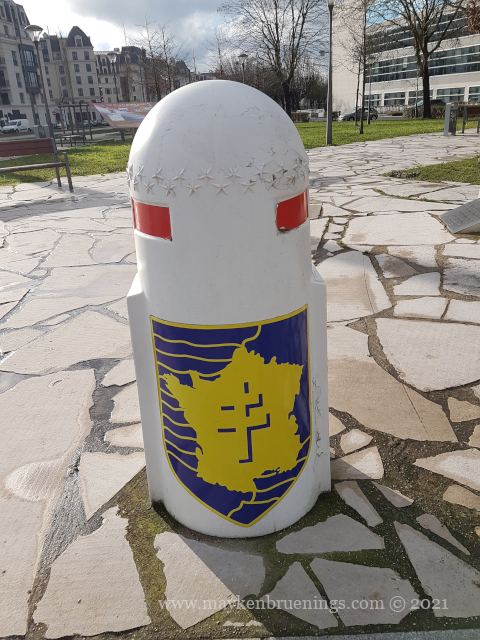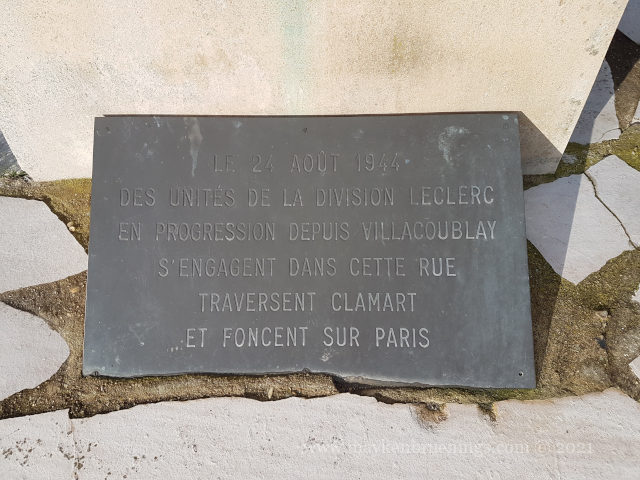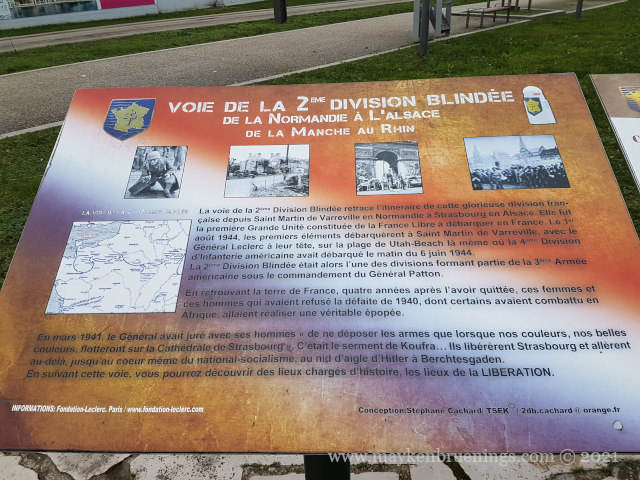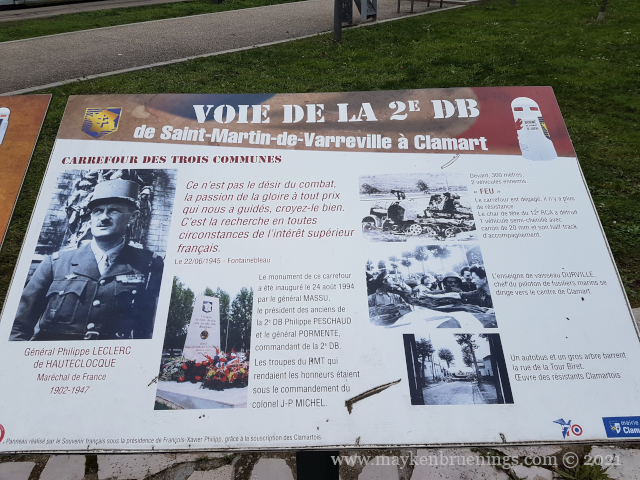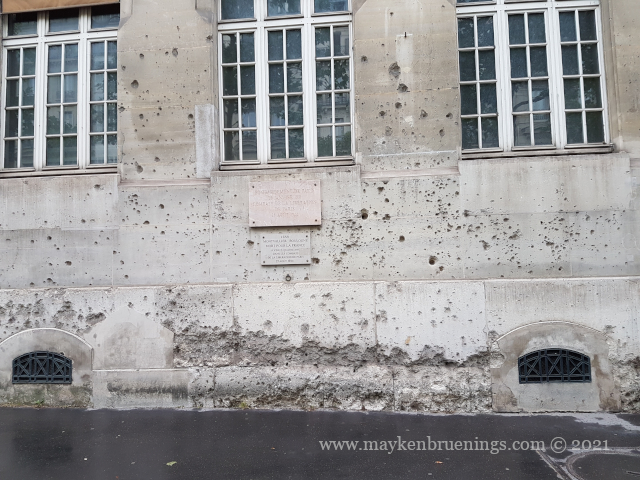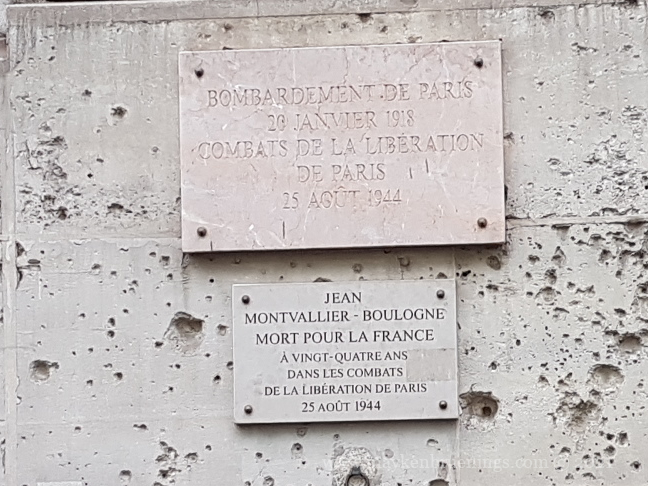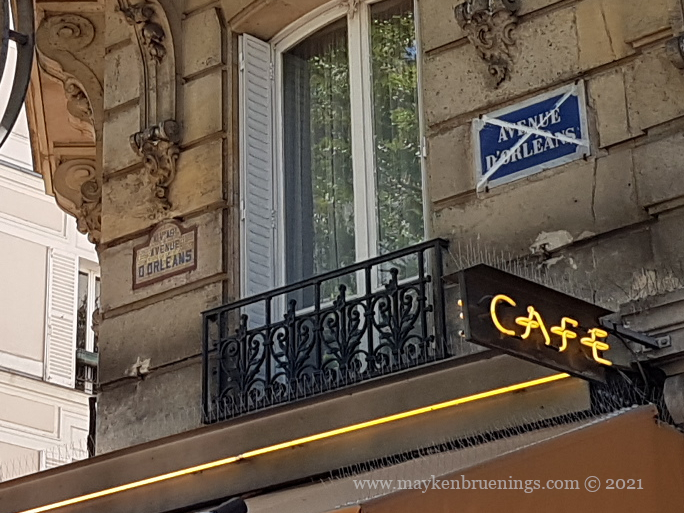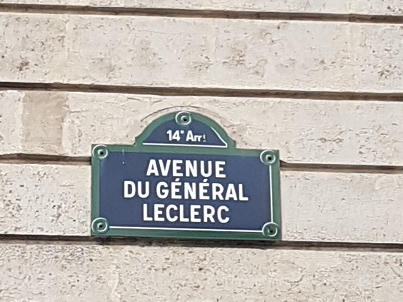As first a settlement and later a city, Paris has existed for over 2,000 years. History has left its marks on the city, and traces of different time periods can be found all around Paris. In non-chronological order, let’s look at some that you might have come past during a visit without knowing.
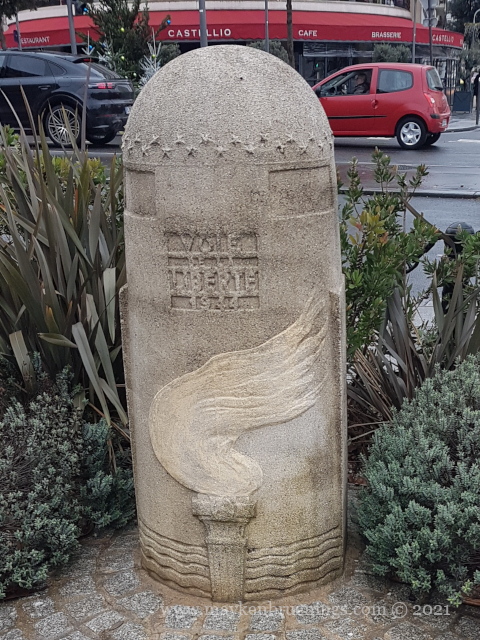
If you have been driving on the roads of northwestern France, maybe you have noticed stone markers with a flame in addition to regular distance markers. The bornes de la liberté are set along the route of the Allied Forces from D-Day in June 1944. Liberty Road (la Voie de la Liberté) starts in Normandy, travels across northern France to Metz near the German border and then northwards to Bastogne on the border of Luxemburg and Belgium. But other markers can be found outside of this main route.
In March 1941, following the battle of Kufra in Libya, Leclerc (then a colonel) and his men swear an oath to “not put down the arm until our colours fly over the cathedral of Strasburg”. They fulfilled their oath in November of the same year. But before they could liberate Strasburg, they had to liberate Paris.
In August 1944, the Second Armored Division, in French 2e Division Blindée shortened to 2e DB, marched into Paris from the south. Commanded by the now General Leclerc, it was also called the Division Leclerc.
This monument commemorates not only the Oath of Kufra and the Liberation itself but also the events in this town the 2e DB crossed.
Traces of the combat in Paris in August 1944 can be found–among other places–on the wall of the Paris School of Mines on the boulevard Saint Michel (6th arrondissement, near the Luxemburg Gardens).
The avenue d’Orléans, in the 14th arrondissement leading from the Porte d’Orléans to the Place Denfert-Rochereau is today called Avenue du Général Leclerc.
